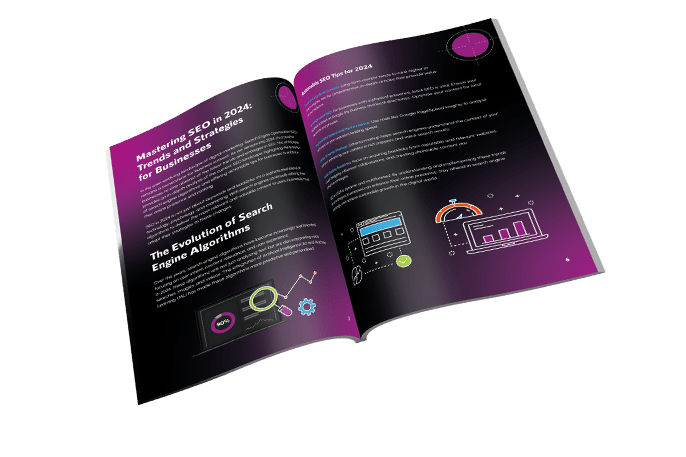News
User-Centric Design: How Graphic Designers Can Improve UX
In today’s digital landscape, where attention is scarce and competition is fierce, user experience (UX) has emerged as a critical factor in the success of websites and applications. User-centric design, a philosophy that prioritizes the needs and preferences of the end user, lies at the heart of creating exceptional UX. Graphic designers play a pivotal role in this process, as they are responsible for crafting the visual elements that shape the user’s interaction with digital interfaces. In this article, we delve into the principles of user-centric design and explore how graphic designers can leverage their skills to enhance UX.
Understanding User-Centric Design
User-centric design, also known as human-centered design, revolves around the idea of putting the user at the forefront of the design process. It involves empathizing with users, defining their needs and goals, ideating solutions, prototyping designs, and testing iteratively to ensure usability and satisfaction ([1]). Rather than dictating how users should interact with a product, user-centric design aims to adapt to users’ behaviours and preferences, ultimately resulting in intuitive and delightful experiences.
The Importance of User Experience
The significance of UX cannot be overstated. Research indicates that 88% of online consumers are less likely to return to a website after a bad experience ([2]). Furthermore, 94% of first impressions are design-related ([3]). These statistics underscore the critical role that UX plays in shaping users’ perceptions and behaviours. A well-designed user experience not only enhances satisfaction and loyalty but also drives business outcomes such as conversion rates and revenue.
The Role of Graphic Designers
Graphic designers are instrumental in translating user-centric principles into tangible visual experiences. They are tasked with creating layouts, typography, imagery, and other visual elements that not only look aesthetically pleasing but also facilitate intuitive navigation and comprehension. By understanding the principles of UX design and incorporating them into their work, graphic designers can significantly impact the overall user experience.
Principles of User-Centric Design for Graphic Designers
- Empathy: Graphic designers must empathize with users to understand their needs, preferences, and pain points. Conducting user research, such as surveys, interviews, and usability testing, can provide valuable insights into users’ behaviours and motivations.
- Clear Communication: Effective communication is key to a positive user experience. Graphic designers should strive for clarity and simplicity in their designs, ensuring that information is presented in a way that is easy to understand and navigate.
- Consistency: Consistency breeds familiarity and predictability, which are essential for usability. Graphic designers should establish visual and interaction patterns that remain consistent across different pages and screens, promoting coherence and reducing cognitive load.
- Accessibility: Designing for inclusivity is paramount in user-centric design. Graphic designers should consider accessibility guidelines, such as providing alternative text for images and ensuring sufficient colour contrast, to accommodate users with disabilities and diverse needs.
- Feedback and Iteration: User-centric design is an iterative process that involves continuously gathering feedback and refining designs based on user input. Graphic designers should embrace feedback loops, incorporating user insights to improve usability and address pain points.
Case Study: Redesigning a Mobile Banking App
To illustrate the principles of user-centric design in action, let’s consider the redesign of a mobile banking app. The goal is to improve the user experience for both existing customers and potential users.
1. User Research: The design team conducts surveys and interviews with current users to identify pain points and areas for improvement. They discover that users struggle with complex navigation, unclear terminology, and slow loading times.
2. Prototyping: Based on the insights gathered from user research, the design team creates wireframes and prototypes of the redesigned app. They focus on simplifying the navigation structure, using familiar terminology, and optimizing performance.
3. Usability Testing: The prototypes are tested with a group of users representative of the app’s target audience. Users are asked to perform common tasks, such as checking their balance and transferring funds, while providing feedback on their experience.
4. Iterative Refinement: The feedback from usability testing is used to iterate on the design, making adjustments to address usability issues and improve overall satisfaction. This iterative process continues until the design meets the needs and expectations of users.
Conclusion
User-centric design lies at the intersection of empathy, creativity, and functionality. By embracing the principles of user-centric design, graphic designers can create digital experiences that are not only visually appealing but also intuitive, accessible, and engaging. By prioritizing the needs and preferences of users, graphic designers have the power to shape the future of digital interaction and drive meaningful impact in the digital landscape.
In an era where user experience reigns supreme, the role of graphic designers in improving UX has never been more crucial. By championing user-centric principles and incorporating them into their design practice, graphic designers can elevate the quality of digital experiences and ultimately enhance the lives of users across the globe.
















The Ultimate Social Media Guide
With the ever-growing power of social media, we use the latest techniques, video, and animation software to craft eye-catching social media assets that make your brand pop. Our designers, wielding Adobe Creative tools, create distinctive animations and graphics to illuminate your brand story and highlight your products or services. Want a unique design? No problem – we also offer bespoke designs to match your brand aesthetic.